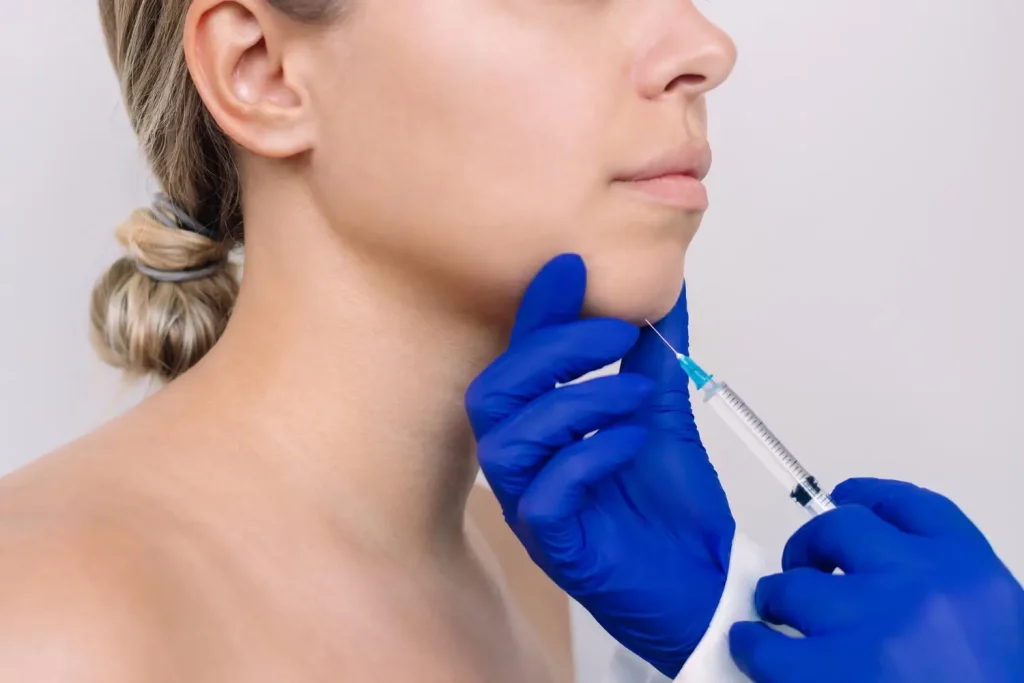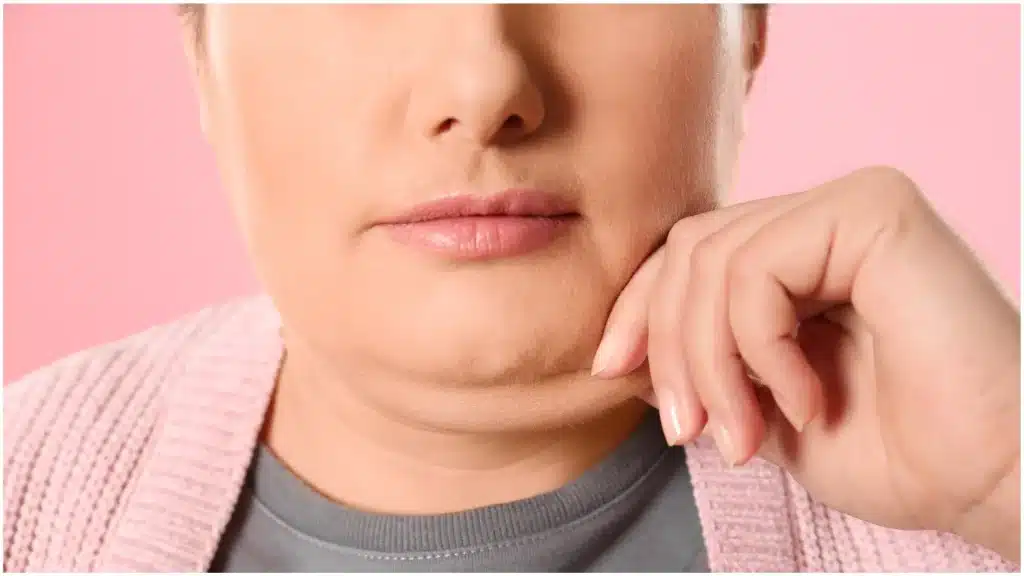Juvederm and Esthelis are brands of hyaluronic acid dermal fillers that aim to moisturize, volumize, and revitalize adult skin. Juvederm is preferred by beauticians and doctors nationwide, but that does not mean Esthelis is not offered in clinics. The latter is a brand that is produced by Anteis SA, a Swiss manufacturer, and shares similar properties with its sister product, Belotero. Let’s have a look at the similarities and differences between the Juvederm line and Esthelis.
The Main Ingredient: Hyaluronic Acid
Hyaluronic acid is a main ingredient for most modern dermal fillers. This substance is originally found in the body as a hydrating and collagen-protecting agent in the skin’s extracellular matrix. It encourages the migration and activation of fibroblasts and inhibits matrix-metalloproteinase (MMP) that degrades collagen. As such, it plays an integral role in the maintenance of the skin’s health and youthfulness; consequently, the decline in the concentration of this substance in the body leads to dull, blemished skin.
Some dermal fillers are temporary, however they are excellent vitality boosters for aging skin. Many of the formulations have an impressive, extensive track record of removing fine lines and severe deep wrinkles, volumizing areas of sagging or sunken skin, and improving harsh skin complexion. However, what matters most is the type of hyaluronic acid-based filler used in the formulation and how it is manufactured. Overall, a high-quality hyaluronic acid filler is produced in a gel form that is viscoelastic enough to allow it to conform to the contours of the face, something that is unique across individuals.
Do Juvederm and Esthelis Work the Same Way?
Instead of sourcing from animals, both dermal filler lines source their hyaluronic acid from non-mammalian sources. In this respect, both brands use their own respective biofermentation process to successfully extract hyaluronic acid from bacteria. In both brands, the hyaluronic acid undergoes cross-linking via a reticulating agent.
Juvederm produces its fillers with either Hylacross or Vycross Technology. The Vycross line of fillers combine mostly low-molecular-weight hyaluronic acid with some high-molecular-weight hyaluronic acid together so that these fillers have longer-lasting effects that can also resist any external pressure. Juvederm products each have a different concentration of hyaluronic acid so that each one can treat specific facial concerns, including deep marionette and nasolabial folds, loss of volume, lip enhancement, and other facial lines. This means that the Juvederm brand as a whole can treat a wide range of conditions and, consequently, a wide range of patients.
Esthelis fillers use Cohesive Polydensified Matrix (CPM) technology, which produces a dynamic cross-linking density specific to each of these monophasic hyaluronic acid gels. Processed with BDDE, some Esthetic fillers have areas that are denser to achieve a volumizing impact, whereas some the other parts of other fillers are more cohesive due to a low density of cross-linking. This cohesiveness allows these particular gels to better integrate with the neighboring soft tissues.
Esthelis fillers also have an additional layer of glycerol to its hyaluronic acid particles. Glycerol aims to protect the monophasic hyaluronan from harmful free radicals, thermal-based degradation, and enzymatic assault; this protection leads to Esthelis fillers lasting longer when implanted. In contrast, Juvederm fillers have a higher risk of causing lumpiness and opaqueness once injected.
Differences between Esthelis vs Juvederm
Range of Products Available
Juvederm has a number of products available. For example, Juvederm Ultra is a highly viscous dermal filler than can help amplify the skin’s radiance. For volume augmentation, Juvederm Voluma has a thicker concentration that can help augment larger skin areas such as the cheeks, chin, and even the décolletage. Meanwhile, Volbella has a lower and softer gel viscosity that is suitable treating more vulnerable skin such as the lips.
On the other hand, Esthelis is available in three different formulations: Esthelis Soft, Basic, and Fortelis. Esthelis Soft is used for superficial to mid-dermal injections to can correct fine wrinkles located across the face; it can treat lip commissures, forehead wrinkles, crow’s feet, facial depressions, and wrinkles in the perioral area. Esthelis Basic goes deeper into the deep dermis for volumizing effects; it is suitable for lip augmentation and facial contouring and treating the nasolabial furrows, glabellar lines, and deeper facial depressions or scars.
The dermal fillers in both lines have the ability to last for as long as six months to 18 months, depending on the type of product used and the indication addressed.
Treatment Procedures
The clear, colorless, highly viscous and nonpyrogenic gels from both Juvederm and Esthelis are supplied in syringes with Luer-Lok fittings for intradermal injections. In regards to the former, the variance in hyaluronic acid concentration across each Juvederm filler means that different injection techniques—including cross-hatching, linear threading, and more—need to be used for different Juvederm fillers; there is no one suitable injection technique for all Juvederm fillers.
The gel construction of Esthelis fillers prevents the Tyndall effect from occurring when they are injected superficially via the blanching technique. Anteis SA has developed a fully automated Anteis Injection System, which is designed to bring about precise injection, for use with Esthelis fillers. The use of a fine G-needle to implant these fillers allows for flexibility in implant angle and depth placement and better control over the volume and speed of the injection. This system can reduce the risk of complications occurring.
The treatment procedures for Esthelis fillers entail a series of initial injections. Two to three treatment sessions with monthly intervals are recommended so as to achieve the optimal results of these fillers. The results of said fillers can be prolonged by following up with a maintenance treatment once or twice a year, depending on the implant’s biocompatibility with the patient. Arguably, histological slides of Belotero/Esthelis show that it causes less inflammation than comparable Juvederm fillers.
The Outcomes and Management
Dermal filler injections are meant to be minimally invasive, and both Juvederm and Esthelis fillers are no exception. Treatment with any one of the fillers from either brand may take less than hour, and patients only need minimal downtime to recover and can swiftly get back into their daily routines after treatment with any Juvederm or Esthelis filler.
It does not hurt for patients to perform adequate aftercare after their treatment with a dermal filler. Mild adverse effects may occur due to the needle puncture; these effects can include bruising, redness, swelling, and tenderness. Itching or discoloration may subside within 48 hours or within a week. After treatment with any of the filler, patients are advised to reduce their exposure to the sun and thermal temperatures while allowing the implants to settle in.
A good consultation investigates a patient’s allergies and health condition and assigns appropriate dermal filler. Juvederm and Esthelis are dermal filler brands whose fillers can, when used in appropriate circumstances and injected properly, improve adult skin and make it appear younger and more radiant.
References
- B, Rzany & Buntrock, Heike & V, Hartmann & Kerscher, Martina. (2012). Non-permanent fillers: Belotero/Esthelis and Teosyal. In: Carruthers J, Carruthers A (ed.) Soft Tissue Augmentation: Procedures in Cosmetic Dermatology (Expert Consult – Online and Print). 252.
- Brandt, F. S., & Cazzaniga, A. (2008). Hyaluronic acid gel fillers in the management of facial aging. Clinical Interventions in Aging, 3(1), 153–159.
- Consulting Room, Juvederm Vycross. https://consultingroom.com/Treatment/Juvederm-VYCROSS-VOLIFT-VOLBELLA-VOLITE
- Juvederm Official Website. Juvederm Official Website. https://www.juvederm.com
- Dermal Fillers Review, “Esthelis”. http://www.dermalfillersreview.com/esthelis/
- Gauglitz, G., Steckmeier, S., Pötschke, J., & Schwaiger, H. (2017). Cohesive Polydensified Matrix®hyaluronic acid volumizer injected for cheek augmentation has additional positive effect on nasolabial folds. Clinical, Cosmetic and Investigational Dermatology, 10, 507–513. http://doi.org/10.2147/CCID.S141906
- Belotero Product Catalogue. http://www.melon.fi/fi/esitteet/Belotero%20product%20catalogue.pdf



















